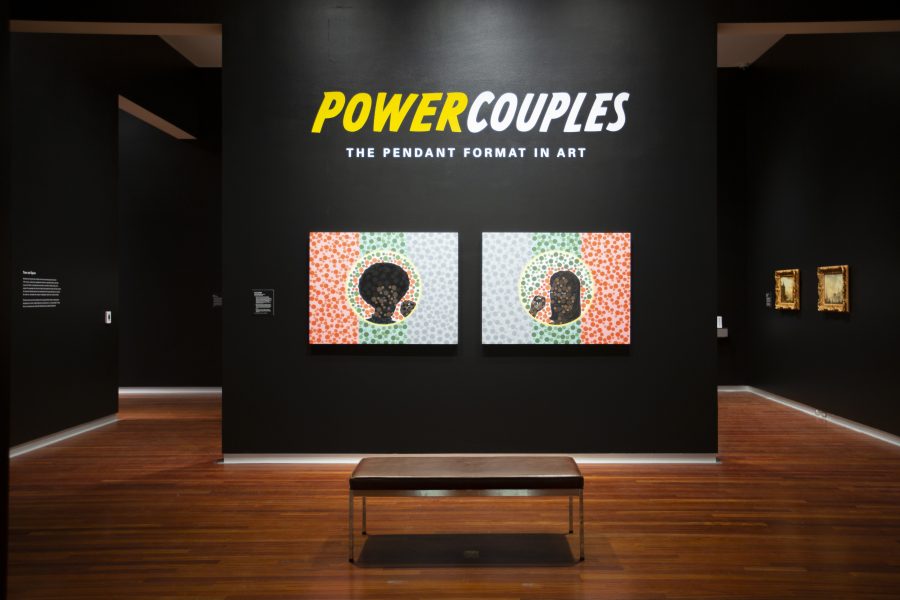In Utah Museum of Fine Arts’ newest exhibition, two heads are better than one. With pieces previously found in the museum’s collection accompanied with newly acquired pieces, the collection explores pendant pieces — pairs whose stories “hang” on one another. Leslie Anderson, curator of European, American and regional art at UMFA began her research after noticing interesting pairs in the collection, originally intending to treat old paintings. Through her work, “Power Couples: The Pendant Format in Art” presents pieces patrons may have seen before, but in the light of new comparisons that are engaging and relevant.
Stepping into the first hall, many of the paired portraits follow a similar traditional format. The man of the household occupies the space on his right, facing squarely out of frame with a stoic and regal demeanor. His wife sits on his left, turned toward him at an altitude, hands resting in their laps. These coupled paintings appear familiar — they emerged as status symbols in upper-class households and were popular requests among artists who could charge more for two paintings instead of one — but the pendants carry a larger story.
From the subjects’ views, the man stands on the right, the space in many religious pieces that was indicative of something heavenly or holy. Opposite of them, the women occupy the side that carries earthly and by association sinful connotations. So, simple portraiture becomes a look into 16th century social and gender norms. Anderson’s world explores these tropes of pendant format, but also how the story changes when the rules are broken. Women on the right side could be indicative of some sort of affair or simply the work of an untrained artist.
The evolution of pendants really shines in the second hall. Immediately, visitors are met with a pair of Kerry James Marshall paintings, showing two black figures raising their fists as a symbol of black power. However, the subjects are formed out of the familiar design of an Ishihara dot test for red-green color blindness. While the art follows the basics of a traditional pendant piece, it creates a layered conversation on racism, status and identity.
Pendants in this hall take shape without human subjects as well, presenting comparisons of a church hall by day and night, a harbor with boats coming and going, two historical sites with similar significance and, in work that breaks off of the canvas, looping videos of airport hallways. Moving throughout the rest of the exhibit, pendants shape analogies and comparisons found in everything from paintings of cats to sculptures of salt and pepper shakers. It also highlights the interactive nature of the exhibition, where patrons can challenge and create pendant narratives of their own on magnet boards or in costume items.
Perhaps the exhibition’s most hidden gem is the pair of Gabriel de Saint-Aubin’s paintings, often referred to as “Law” and “Archaeology.” Anderson came across the two in the museum’s collection and was intrigued by the unlikely duo — “law” often has other parallels, such as grace or justice. Power Couples, however, presents them in a different light. With her iconographic research and study on the pieces’ history, Anderson argues that the pendant represents the figures law, vigilance and justice in comparison to fidelity and discretion — not archaeology. The Saint-Aubin pieces, along with others in the collection, display how timeless art still has an impact and, most of all, how connotations and interpretations shift over time.
In this way, moving through the Power Couples exhibitions is reminiscent of a “spot the difference” puzzle. While each individual piece is gorgeous without its pair, having the two narratives rest on each other sparks important conversations. Anderson’s work on the collection takes you through history, creating dialogues on identity, power and status that couldn’t be accomplished on their own. Like the mantra on the wall proclaims, “One is the loneliest number.”
“Power Couples” is open in the Utah Museum for Fine Arts through Dec. 8. Entrance is included in general admission prices. More information can be found on their website.



